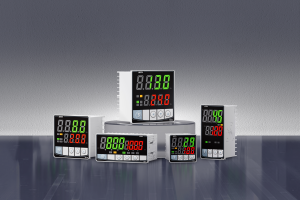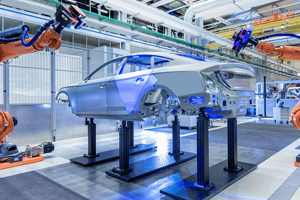How to Tune a PID Temperature Controller: A Comprehensive Guide
Learn how to tune a PID temperature controller with our detailed guide. Understand the roles of PID components and explore manual, heuristic, and automated tuning methods for optimal performance.
1.Introduction
PID (Proportional-Integral-Derivative) controllers play a vital role in many industrial and commercial settings for maintaining precise temperature regulation. Tuning your PID controller properly to achieve peak performance and stability for any system; this article presents an in-depth guide for tuning it via manual, heuristic and automated methods.
2.Understanding PID Components
To successfully tune a PID controller, it is vitally important that its three components understand their respective roles:
Proportional (P)
mes This component controls our system's response to current errors by directly correlating with their error value; increasing proportional gain will improve responsiveness but can increase risk if set too high.
Integral (I)
The integral component addresses past errors accumulated, in an attempt to eliminate residual steady-state error that arises with proportional controllers alone. Care must be taken when setting Ki to avoid excess oscillations.
Derivative (D)
The derivative component predicts future errors based on rate of change. This helps dampen system responses, reduce overshoot and enhance stability; its gain (Kd) should be set so as to balance responsiveness with stability.
3. Preparations for Tuning
Prior to tuning the PID controller, ensure all sensors are functioning as intended and mechanical components are sound. Begin the initial set-up process of your PID controller with all gains (Kp, Ki, Kd) set to zero for optimal results.
Manual Tuning Methods
Manual tuning involves making necessary changes to PID parameters depending on system response and response analysis. Here are steps for manual tuning:
Proportional Tuning
Initialize integral and derivative gains to zero. 2. Increase proportional gain until system starts oscillating, then slowly decrease until approximately half its oscillation value has passed by gradually decreasing Kp until stable response can be attained.
Integral Tuning 2.1 With Kp set, gradually increase Ki to reduce steady-state error. 2. Track system response and adjust Ki to reduce oscillations while keeping accuracy consistent.
4. Derivative Tuning
1. Slightly increase Kd's derivative gain (Kd), gradually, in order to decrease overshoot and enhance stability.
2. Fine tune Kd until reaching an ideal balance between responsiveness and stability.
Heuristic Tuning Methods Heuristic methods provide systematic approaches for tuning PID controllers. Two such strategies include Ziegler-Nichols and Tyreus-Luyben tuning methodologies.
5. Ziegler-Nichols Method
1. Set Ki and Kd to zero. 2. Increase Kp until reaching an ultimate gain (Ku), at which it oscillates with constant amplitude oscillation. 3. To set PID parameters use these formulas: * Kp = 0.6 * Ku * Ki = 2 * Kp / Pu (where Pu is oscillation period).
Pros of Kd = Kp * Pu / 8 Production Optimization * Quick starting point for tuning
Cons: (*) Fine tuning may be needed for optimal performance.
1. Set Ki and Kd to zero.
2. Use Tyreus-Luyben Method and Adjust Kd/Ki to Balance Ki/Kd Ratio
Increase Kp until the system oscillates with a constant amplitude, then use one of these formulas to set PID parameters: * Kp = 0.45* Ku * Ki = Kp / (2.2 * Pu) * Kd = Kp * Pu / 6.3pros and cons of using PID parameters in practice 6.1 The main advantages and disadvantages are as follows. 6.1.1.1 Kd is set equal to 0.45 * Ku, Ki=Kp/2.2*Pu and Kd=Kd=Kd = Kd = Kd 6.3 Pros
* Ziegler-Nichols systems often yield more stable systems.
Cons:* Additional modifications may be necessary depending on your application and requirements.
6. Automated Tuning Methods
Modern PID controllers often come equipped with auto-tune features to simplify their tuning process and accommodate their response to changes within systems. Rather than making manual adjustments manually for every change encountered during tuning sessions, this feature uses algorithms that adjust PID parameters based on how quickly they change within systems.
Benefits
* Saves both time and effort over manual tuning methods.
* Provides an effective basis for further fine-tuning.
Limitations
* May not reach the same levels of optimization as manual or heuristic approaches.
* For accurate tuning, this task requires an efficient system to operate efficiently.
Testing and Validation After tuning a PID controller, it is critical to test its performance under various circumstances, including running different setpoints through it and operating under variable load conditions. * Running tests using different setpoint values.
* Evaluating response to disturbances.
* Making adjustments to PID parameters according to observed performance.
7. Conclusion
Tuning a PID temperature controller is a critical task that ensures the system operates efficiently and accurately. By understanding the roles of the proportional, integral, and derivative components, and using manual, heuristic, or automated tuning methods, you can achieve optimal performance. Regular maintenance and re-tuning are also important to adapt to any changes in the system.
- How to Install a Temperature Controller: Step-by-Step Guide
- how to program Digital a temperature controller























